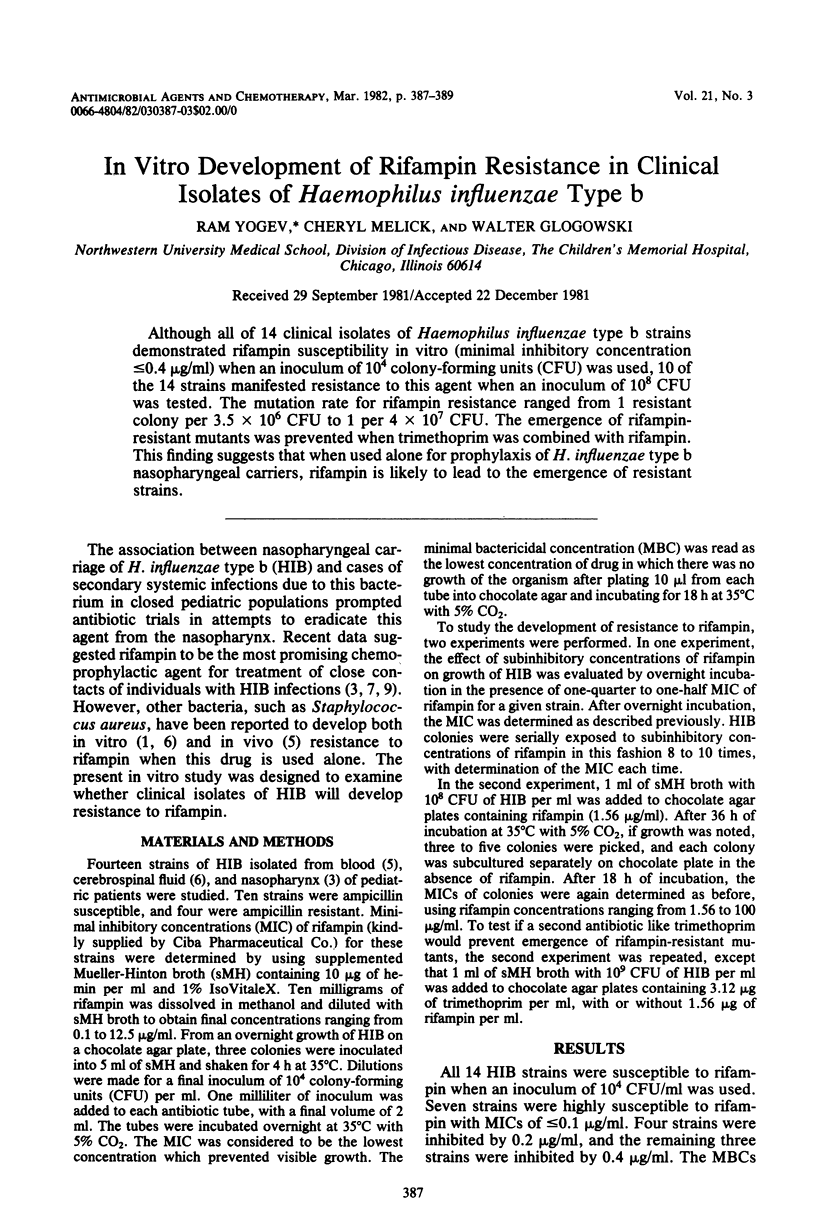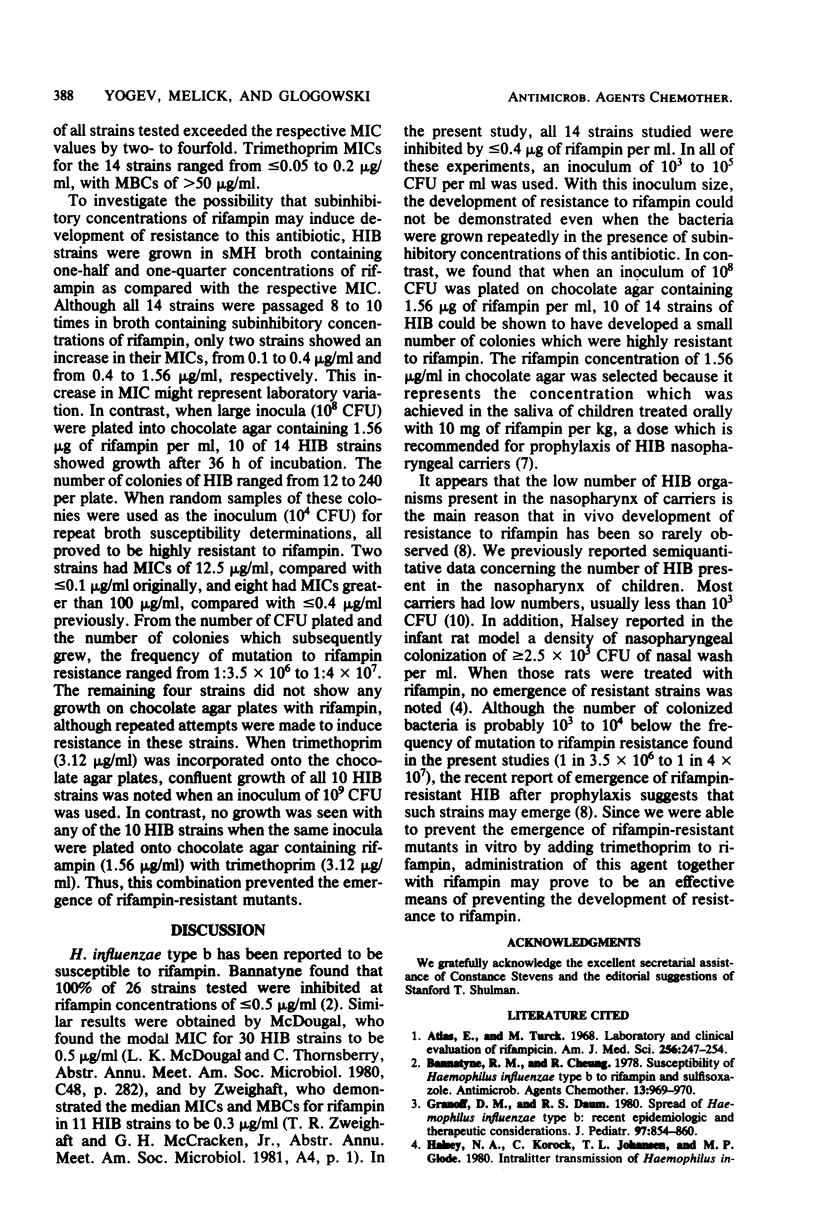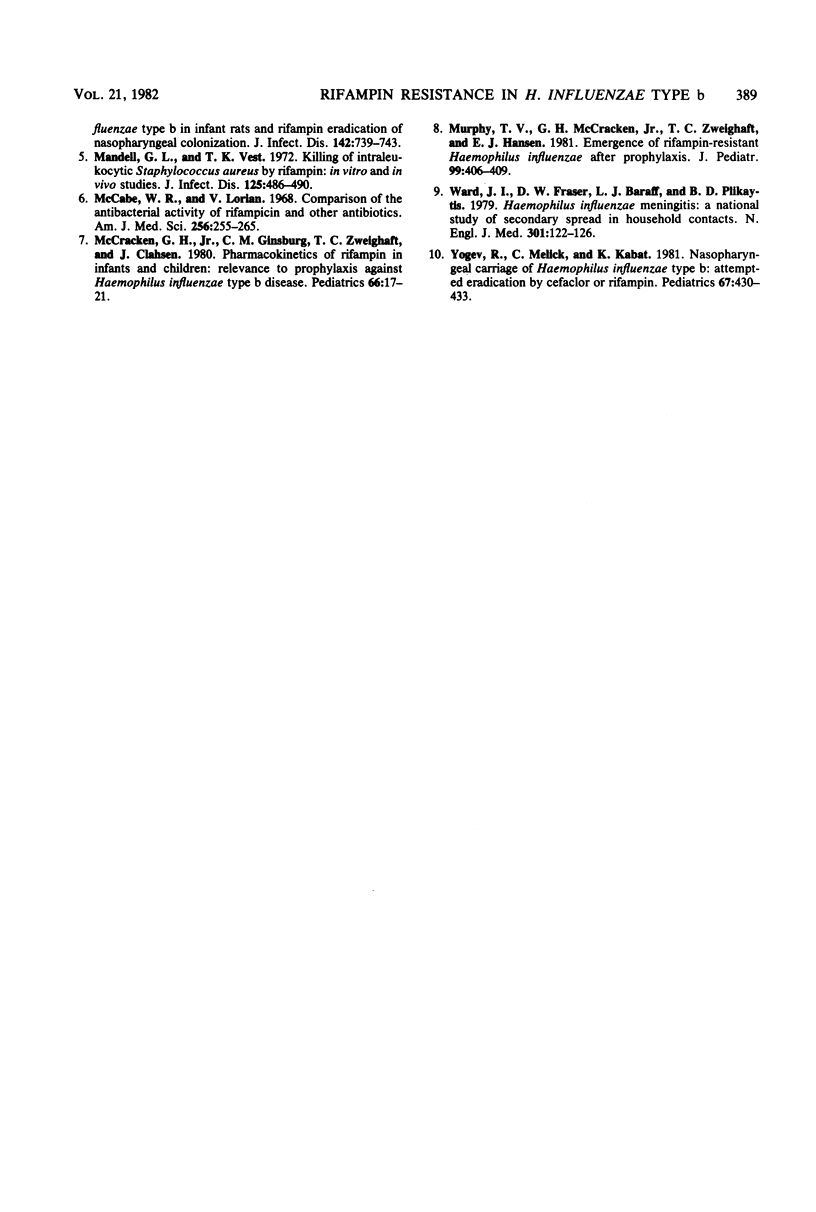Abstract
Although all of 14 clinical isolates of Haemophilus influenzae type b strains demonstrated rifampin susceptibility in vitro (minimal inhibitory concentration less than or equal to 0.4 microgram/ml) when an inoculum of 10(4) colony-forming units (CFU) was used, 10 of the 14 strains manifested resistance to this agent when an inoculum of 10(8) CFU was tested. The mutation rate for rifampin resistance ranged from 1 resistant colony per 3.5 x 10(6) CFU to 1 per 4 x 10(7) CFU. The emergence of rifampin-resistant mutants was prevented when trimethoprim was combined with rifampin. This finding suggests that when used alone for prophylaxis of H. influenzae type b nasopharyngeal carriers, rifampin is likely to lead to the emergence of resistant strains.
Full text
PDF


Selected References
These references are in PubMed. This may not be the complete list of references from this article.
- Granoff D. M., Daum R. S. Spread of Haemophilus influenzae type b: recent epidemiologic and therapeutic considerations. J Pediatr. 1980 Nov;97(5):854–860. doi: 10.1016/s0022-3476(80)80288-5. [DOI] [PubMed] [Google Scholar]
- Mandell G. L., Vest T. K. Killing of intraleukocytic Staphylococcus aureus by rifampin: in-vitro and in-vivo studies. J Infect Dis. 1972 May;125(5):486–490. doi: 10.1093/infdis/125.5.486. [DOI] [PubMed] [Google Scholar]
- McCabe W. R., Lorian V. Comparison of the antibacterial activity of rifampicin and other antibiotics. Am J Med Sci. 1968 Oct;256(4):255–265. doi: 10.1097/00000441-196810000-00007. [DOI] [PubMed] [Google Scholar]
- McCracken G. H., Jr, Ginsburg C. M., Zweighaft T. C., Clahsen J. Pharmacokinetics of rifampin in infants and children: relevance to prophylaxis against Haemophilus influenzae type b disease. Pediatrics. 1980 Jul;66(1):17–21. [PubMed] [Google Scholar]
- Murphy T. V., McCracken G. H., Jr, Zweighaft T. C., Hansen E. J. Emergence of rifampin-resistant Haemophilus influenzae after prophylaxis. J Pediatr. 1981 Sep;99(3):406–409. doi: 10.1016/s0022-3476(81)80328-9. [DOI] [PubMed] [Google Scholar]
- Ward J. I., Fraser D. W., Baraff L. J., Plikaytis B. D. Haemophilus influenzae meningitis. A national study of secondary spread in household contacts. N Engl J Med. 1979 Jul 19;301(3):122–126. doi: 10.1056/NEJM197907193010302. [DOI] [PubMed] [Google Scholar]
- Yogev R., Melick C., Kabat K. Nasopharyngeal carriage of Haemophilus influenzae type b: attempted eradication by cefaclor or rifampin. Pediatrics. 1981 Mar;67(3):430–433. [PubMed] [Google Scholar]


